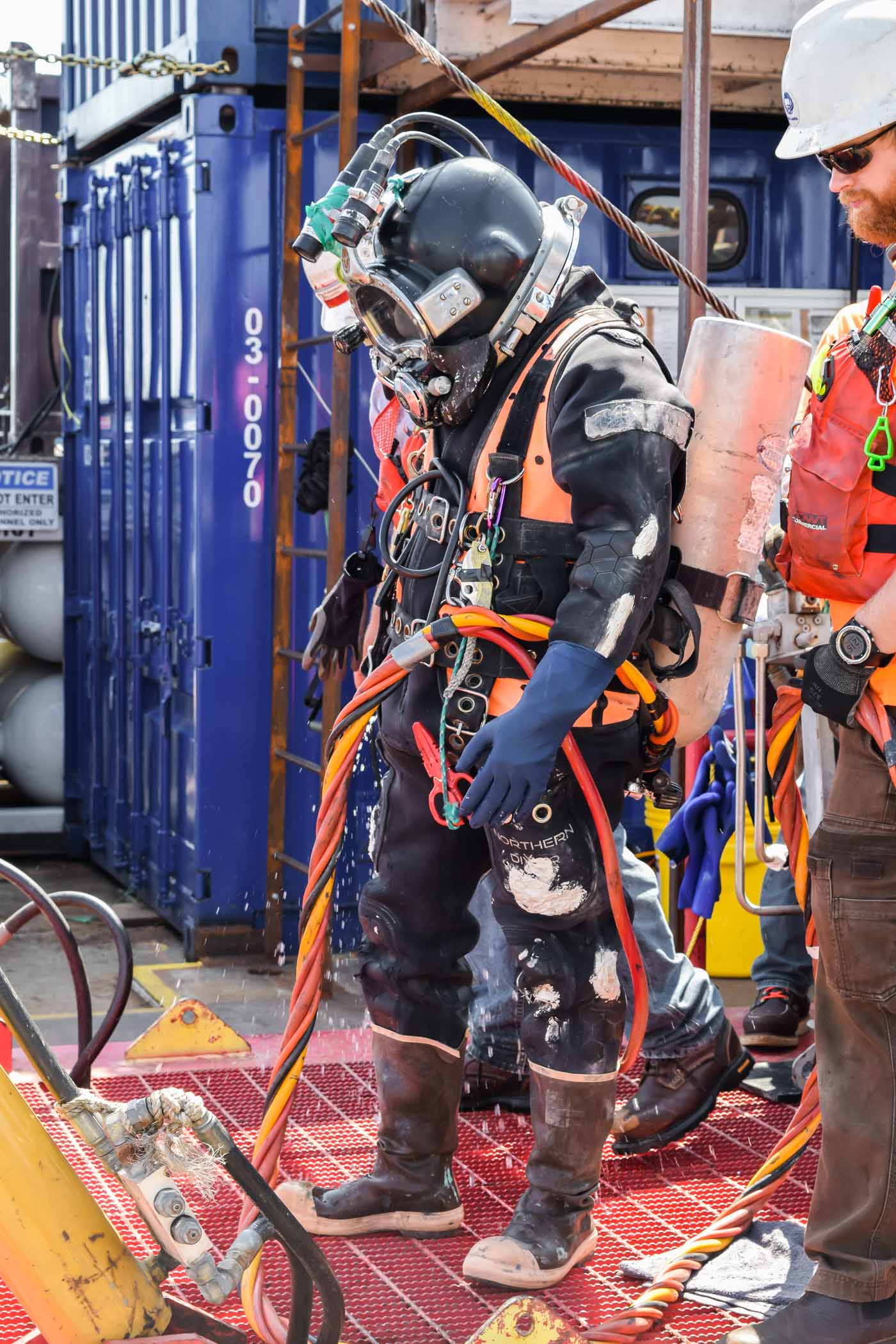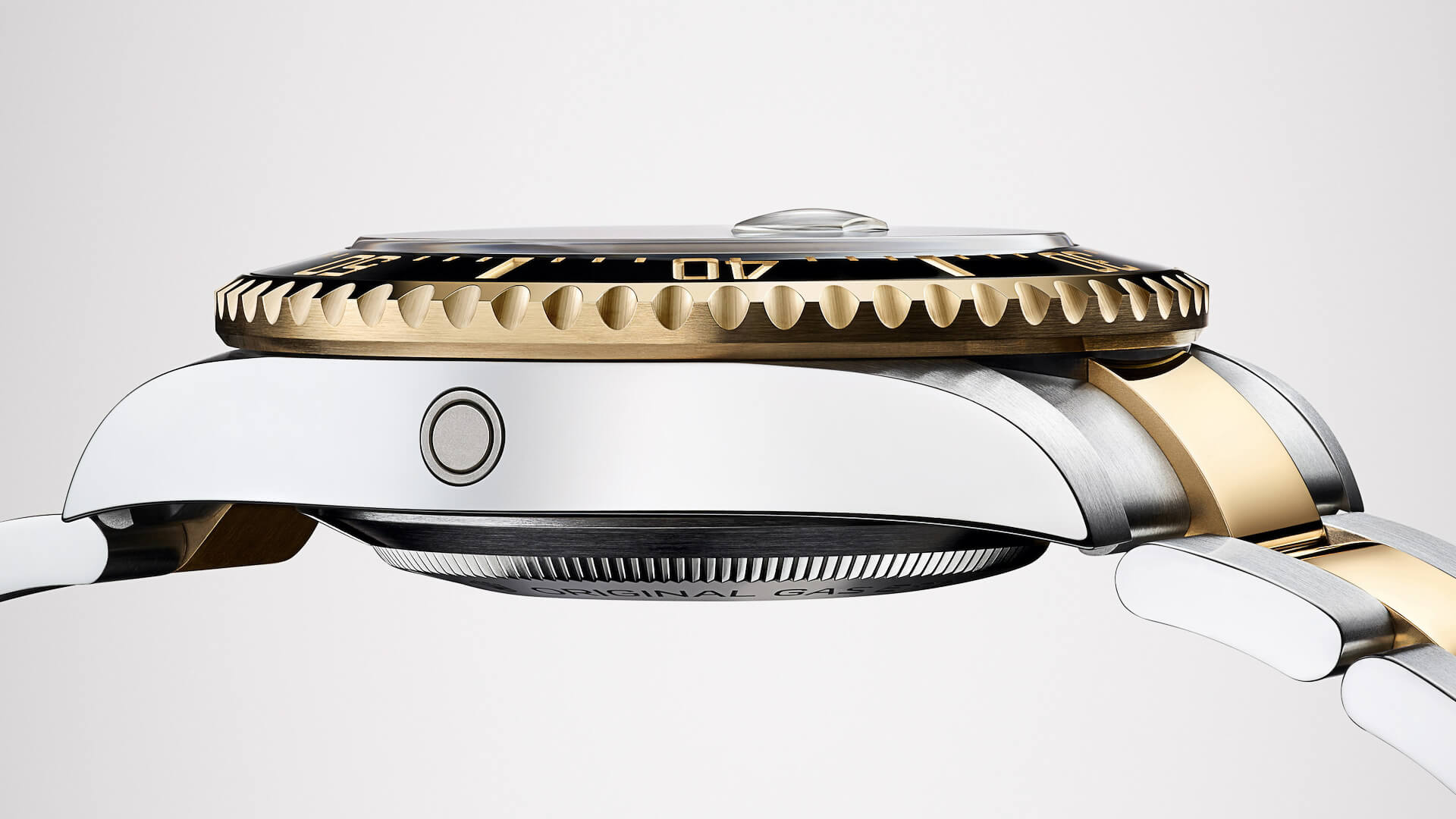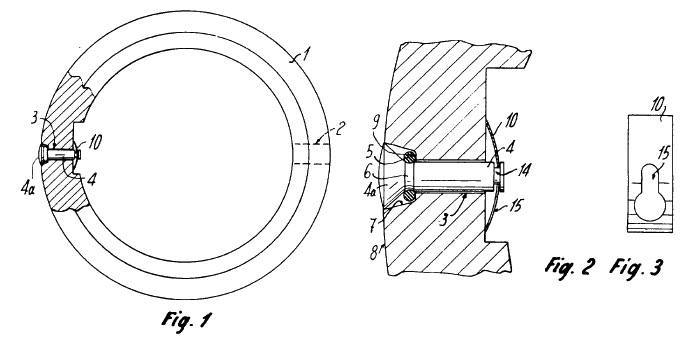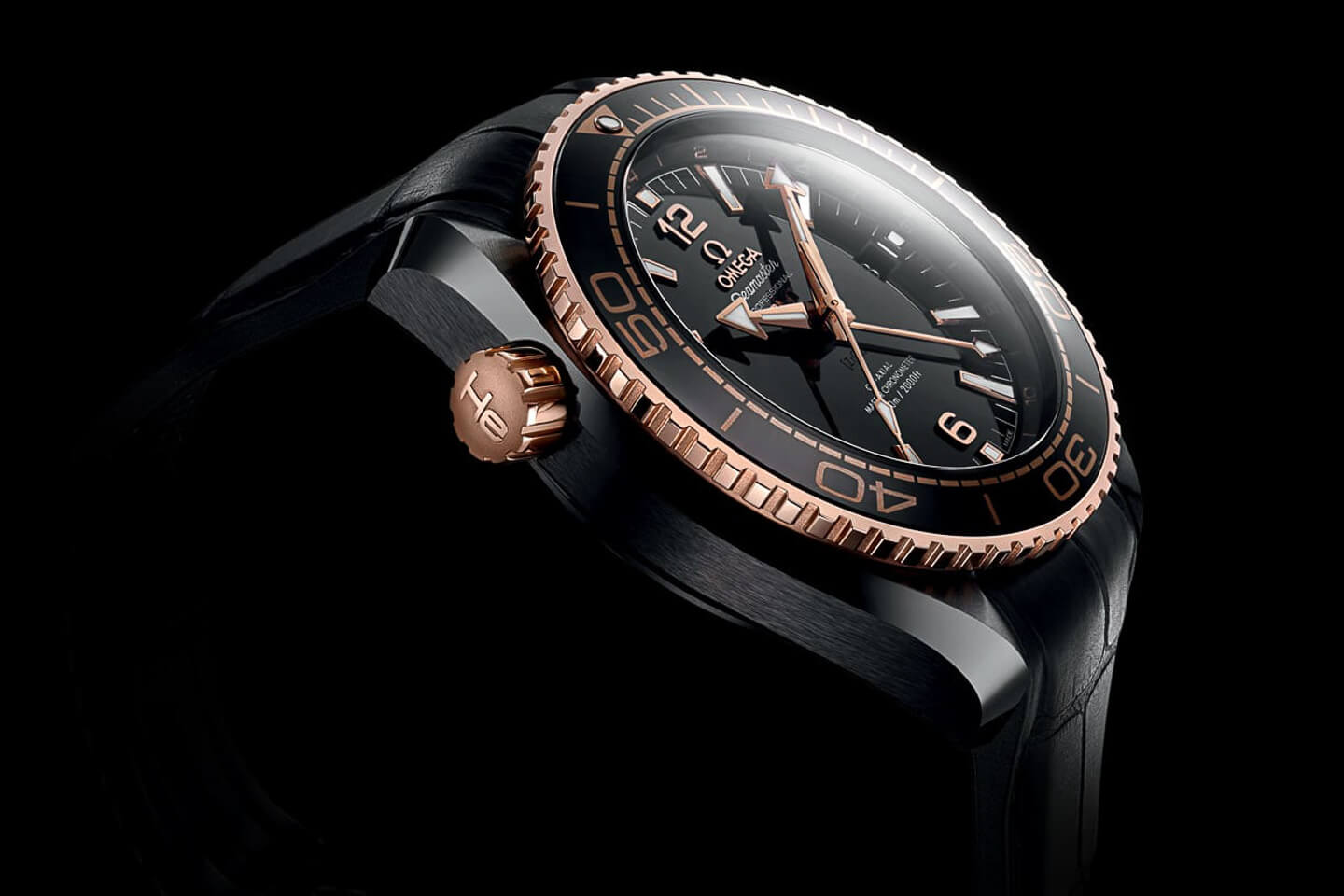 While much real and virtual ink has been spent proclaiming the necessity of the helium release (i.e., “escape”) valve for any professional diver’s watch, this subtle and relatively simple case feature remains one of the most misunderstood complications in the undersea watch world. In order to bring light to the murky depths surrounding the real purpose behind this unassuming valve, I will call upon my training and experience as an inland commercial diver, along with a little help from a few salty saturation divers I happen to know, to finally and correctly describe the helium-rich environment for which the HRV was designed, how the concept works in practice, and why you don’t need one (unless you do). So, do all deep-diving watches need HRVs? How does water not infiltrate the watch through the valve when it operates? Is an HRV required for all dive watches certified over a certain depth? Speaking as a watch-nerd-turned-commercial-diver, I can tell you from experience that the answers to these important questions are not as straightforward as you’d expect.
While much real and virtual ink has been spent proclaiming the necessity of the helium release (i.e., “escape”) valve for any professional diver’s watch, this subtle and relatively simple case feature remains one of the most misunderstood complications in the undersea watch world. In order to bring light to the murky depths surrounding the real purpose behind this unassuming valve, I will call upon my training and experience as an inland commercial diver, along with a little help from a few salty saturation divers I happen to know, to finally and correctly describe the helium-rich environment for which the HRV was designed, how the concept works in practice, and why you don’t need one (unless you do). So, do all deep-diving watches need HRVs? How does water not infiltrate the watch through the valve when it operates? Is an HRV required for all dive watches certified over a certain depth? Speaking as a watch-nerd-turned-commercial-diver, I can tell you from experience that the answers to these important questions are not as straightforward as you’d expect.
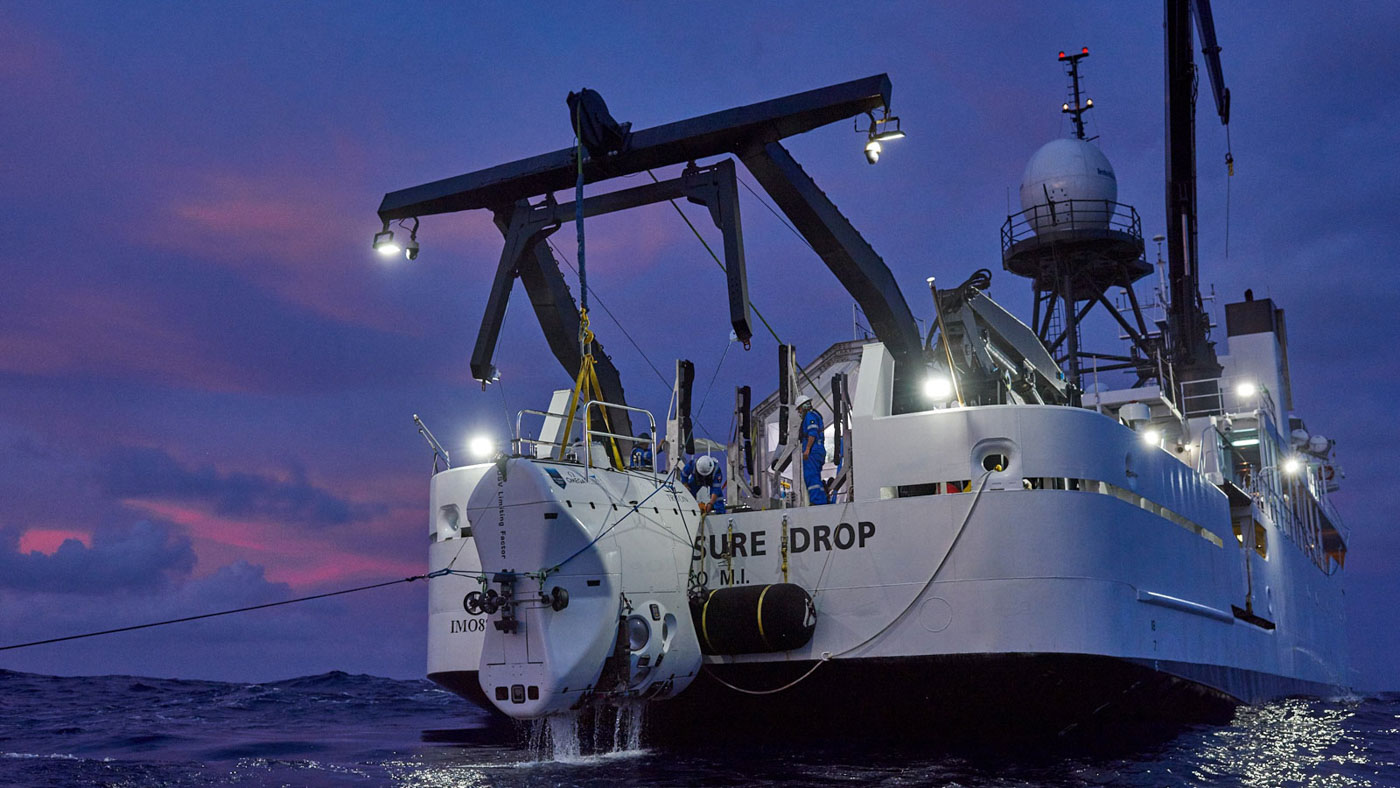 Many brands claim to design watches specifically for “professional divers,” but what does that actually mean? Are we talking about divemasters on Caribbean scuba boats or the burly, hard-hat wearing, underwater-welding divers of the oil and gas industry? What, indeed, is the difference? How does it all work? And wait, who needs a helium release valve, again?
Many brands claim to design watches specifically for “professional divers,” but what does that actually mean? Are we talking about divemasters on Caribbean scuba boats or the burly, hard-hat wearing, underwater-welding divers of the oil and gas industry? What, indeed, is the difference? How does it all work? And wait, who needs a helium release valve, again?
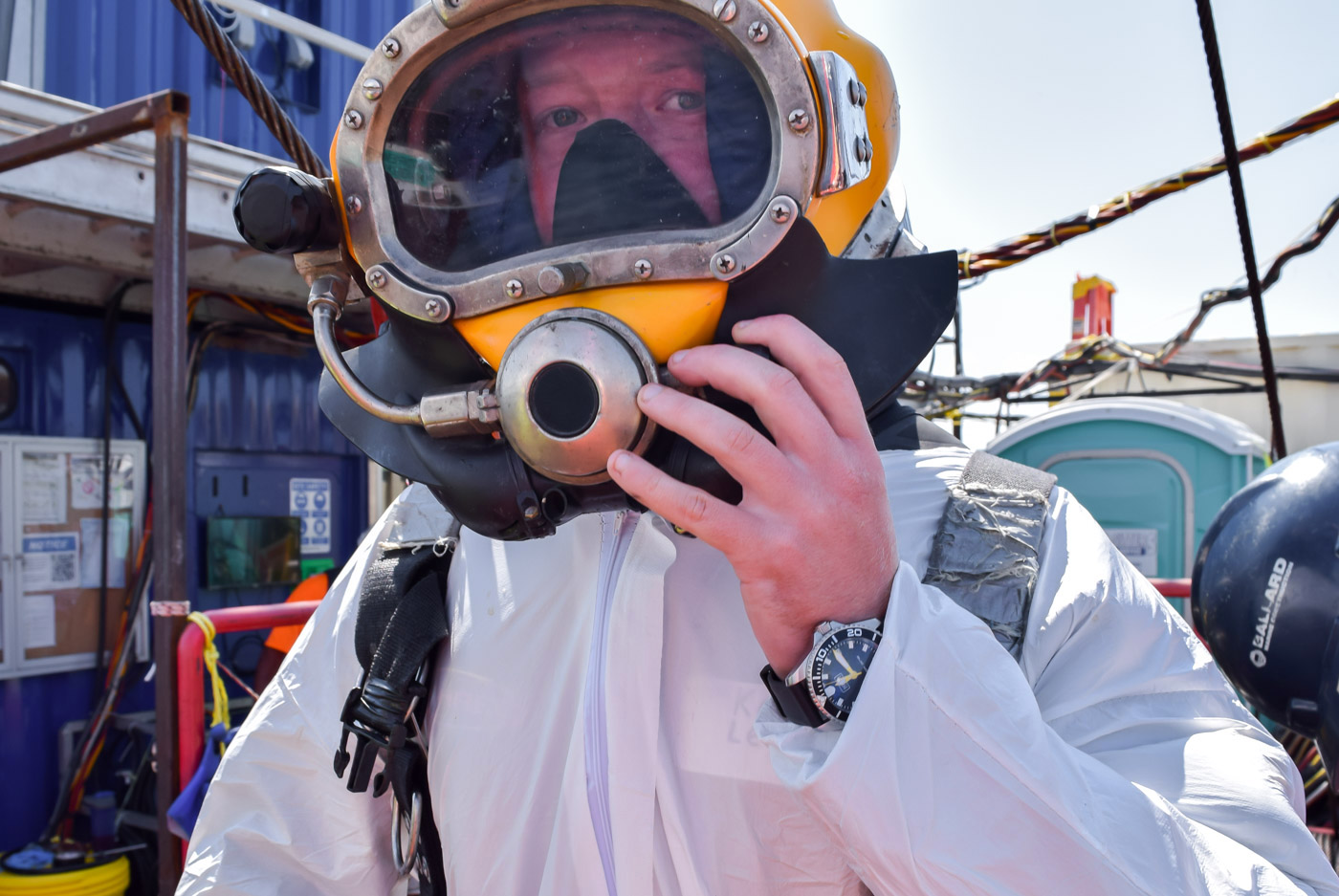 For starters, we have to hash out the “professional” or more often “commercial” diving concept, which exists on a spectrum. At one end, we have the SCUBA (self contained underwater breathing apparatus) professionals, whether divemaster, instructor, scientific diver, public safety, rescue, law enforcement, or any of the guys doing commercial tasks such as cleaning boat bottoms or changing out zincs while using scuba gear. There are gray areas, but at least in the U.S., divers using scuba as a mode of diving are not typically called commercial divers. And, once and for all, regardless of how deep or long these divers dive or what breathing mixture they use, all forms of heliox included, scuba divers categorically do not and will never need a helium release valve. More on that later.
For starters, we have to hash out the “professional” or more often “commercial” diving concept, which exists on a spectrum. At one end, we have the SCUBA (self contained underwater breathing apparatus) professionals, whether divemaster, instructor, scientific diver, public safety, rescue, law enforcement, or any of the guys doing commercial tasks such as cleaning boat bottoms or changing out zincs while using scuba gear. There are gray areas, but at least in the U.S., divers using scuba as a mode of diving are not typically called commercial divers. And, once and for all, regardless of how deep or long these divers dive or what breathing mixture they use, all forms of heliox included, scuba divers categorically do not and will never need a helium release valve. More on that later.
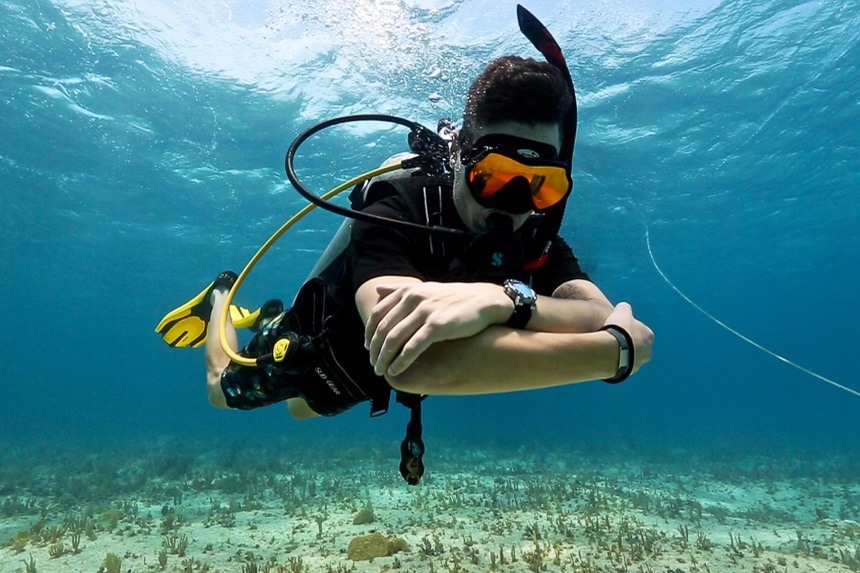 Maintaining a constant bearing along the course of our professional diving spectrum, we then meet the bog-standard commercial diver: an underwater construction worker wearing a purpose-built diving helmet rigidly connected to the surface via a lifeline called an umbilical. Commercial divers work anywhere there is a liquid medium (sewage included!) requiring submerged work, whether in inspection, construction, demolition, or maintenance. As an inland diver, I live in this world, mostly in lakes, rivers, and the submerged bits of industrial settings like steel mills or power plants. As I was disappointed to learn, commercial diving isn’t all (or really ever) shark diving and treasure seeking.
Maintaining a constant bearing along the course of our professional diving spectrum, we then meet the bog-standard commercial diver: an underwater construction worker wearing a purpose-built diving helmet rigidly connected to the surface via a lifeline called an umbilical. Commercial divers work anywhere there is a liquid medium (sewage included!) requiring submerged work, whether in inspection, construction, demolition, or maintenance. As an inland diver, I live in this world, mostly in lakes, rivers, and the submerged bits of industrial settings like steel mills or power plants. As I was disappointed to learn, commercial diving isn’t all (or really ever) shark diving and treasure seeking.
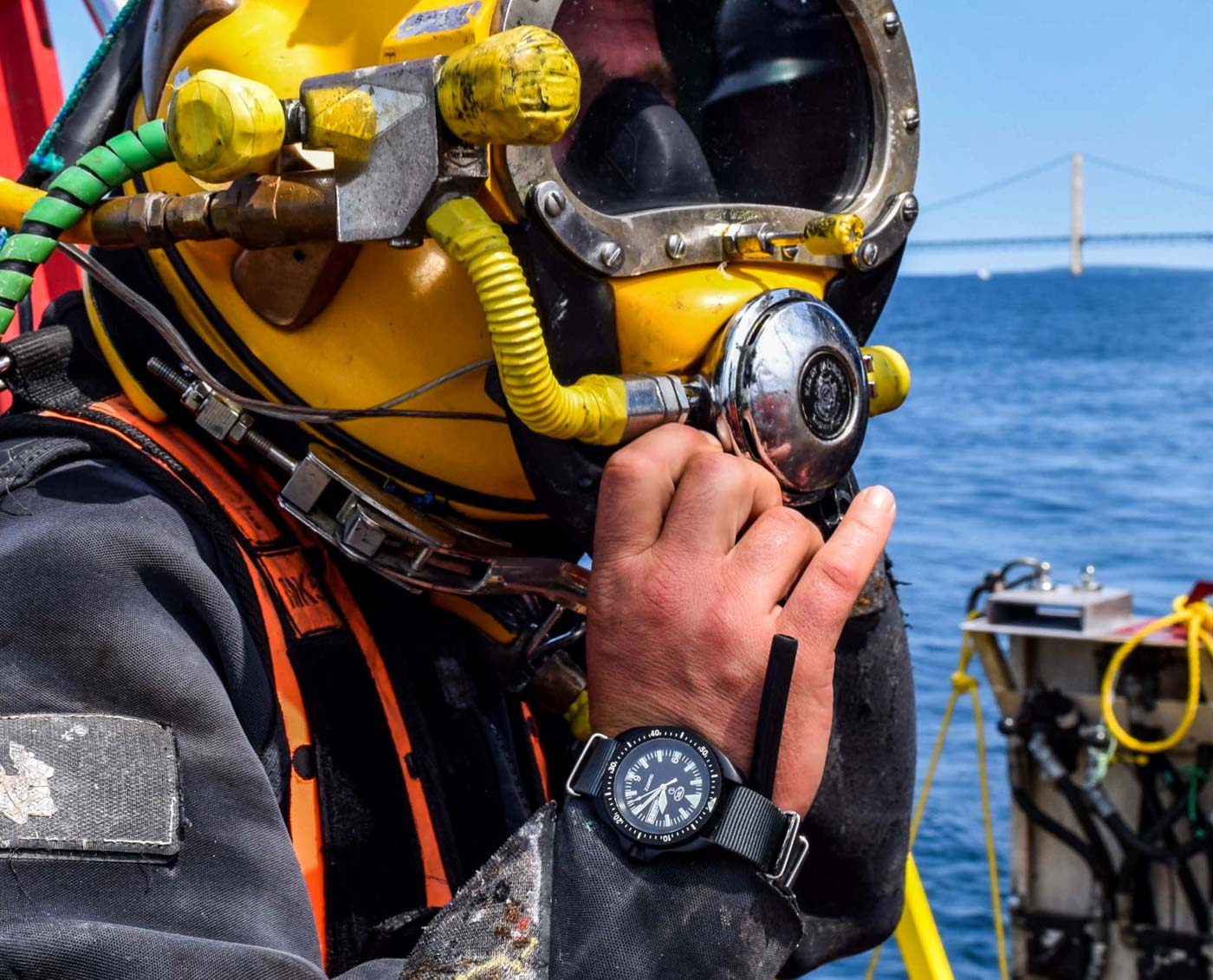 Surface-supplied commercial diving, in its most basic form, takes place in depths ranging from diving-helmet-sticking-out-of-the-water (I’ve done a lot of this) all the way down to a few hundred feet with little change in methodology other than breathing gas mixtures, decompression stops, the use of surface decompression chambers, and reduced bottom times at deeper depths. And — wait for it — any kind of surface supplied diver, from little old me in your local water treatment plant to the hard men of offshore mixed gas, also has no need for a helium release valve, at least not until, or if, they reach the pinnacle of the diving industry and the far end of our spectrum, saturation diving.
Surface-supplied commercial diving, in its most basic form, takes place in depths ranging from diving-helmet-sticking-out-of-the-water (I’ve done a lot of this) all the way down to a few hundred feet with little change in methodology other than breathing gas mixtures, decompression stops, the use of surface decompression chambers, and reduced bottom times at deeper depths. And — wait for it — any kind of surface supplied diver, from little old me in your local water treatment plant to the hard men of offshore mixed gas, also has no need for a helium release valve, at least not until, or if, they reach the pinnacle of the diving industry and the far end of our spectrum, saturation diving.
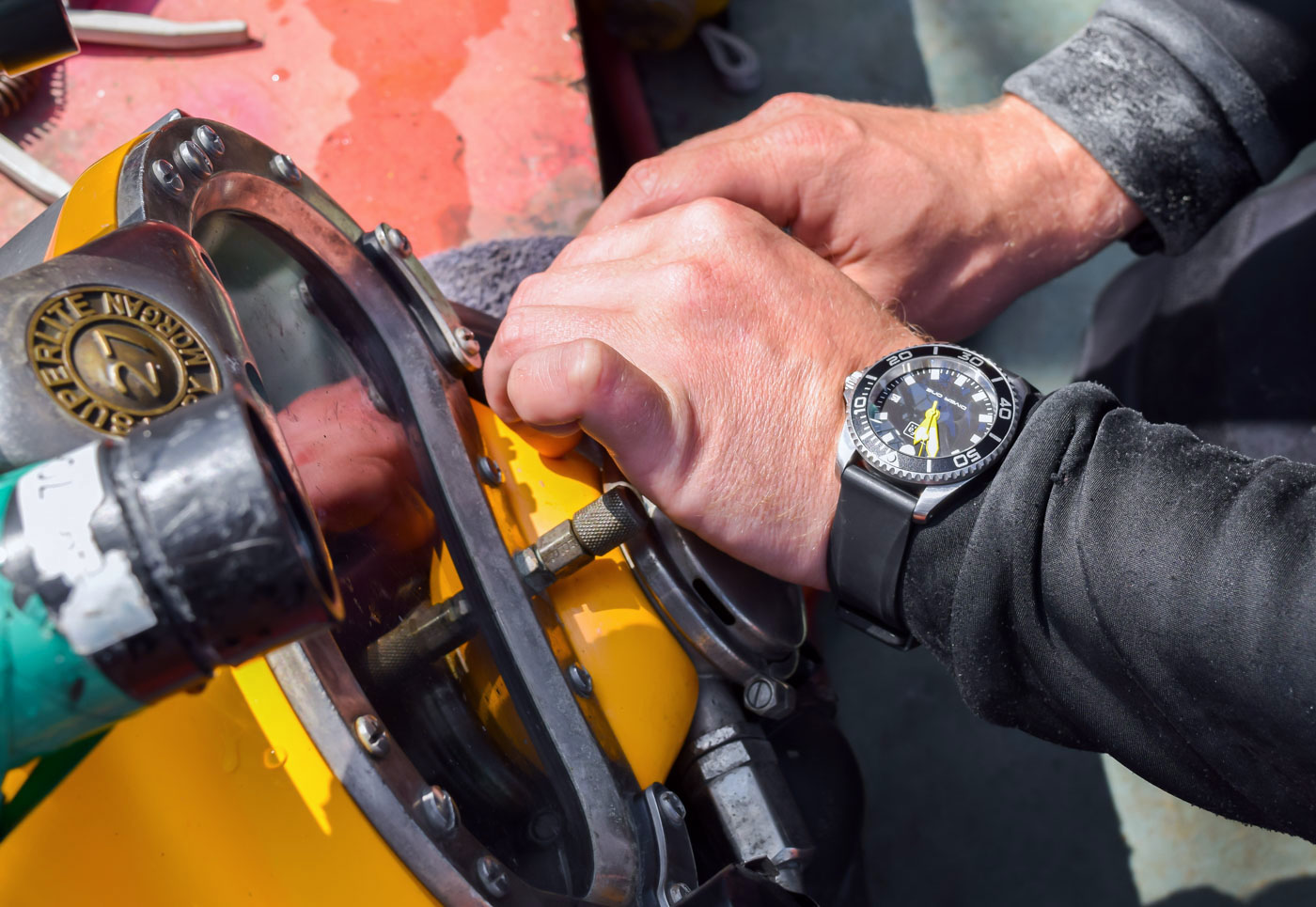 When extended or especially complicated tasks must be completed in deep water, no matter the cost (think oil and gas), saturation diving is often called to task as a means of putting divers to work around the clock, as opposed to the brief bottom times allowed by air- and gas-breathing divers working from the surface. “Sat” is the most elite form of commercial diving, with active saturation divers around the world numbering only in the hundreds at any given time. While saturation diving is inherently dangerous and incredibly expensive, it is the preferred mode of diving in deeper water because of the reduced risk of decompression-related complications and injuries.
When extended or especially complicated tasks must be completed in deep water, no matter the cost (think oil and gas), saturation diving is often called to task as a means of putting divers to work around the clock, as opposed to the brief bottom times allowed by air- and gas-breathing divers working from the surface. “Sat” is the most elite form of commercial diving, with active saturation divers around the world numbering only in the hundreds at any given time. While saturation diving is inherently dangerous and incredibly expensive, it is the preferred mode of diving in deeper water because of the reduced risk of decompression-related complications and injuries.
All divers leaving from the surface are limited in their bottom time by the need to decompress, the process of allowing dissolved nitrogen in the bloodstream and body tissues (a side effect of breathing pressurized air) to dissipate or “offgas” naturally to prevent the rapid expansion and crippling damage caused by nitrogen as it expands in the body upon ascent, known as “the bends.” The often lengthy process of decompression can be aided, and bottom times can be extended by the use of breathing gasses other than air, such as nitrox or heliox, but neither allows anywhere near the bottom time inherent in saturation diving.
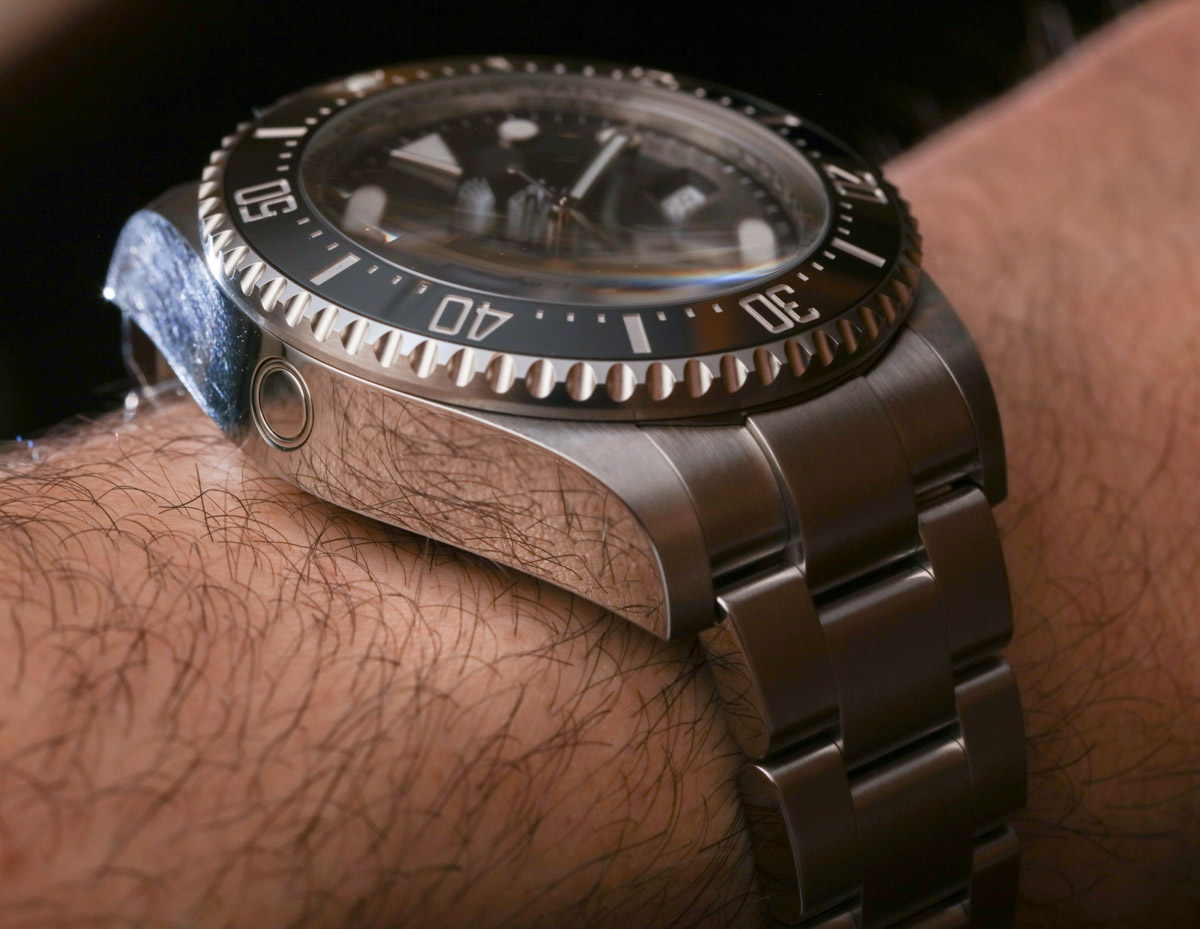 In sat, divers postpone the need for decompression by staying at bottom pressure for the entire approximately month-long period of a “sat run,” a process that works because the human body has a maximum amount of nitrogen it can absorb before being “saturated.” Once saturated, the body doesn’t care how long it stays that way as long as a careful days-long decompression is carried out before returning to surface pressure.
In sat, divers postpone the need for decompression by staying at bottom pressure for the entire approximately month-long period of a “sat run,” a process that works because the human body has a maximum amount of nitrogen it can absorb before being “saturated.” Once saturated, the body doesn’t care how long it stays that way as long as a careful days-long decompression is carried out before returning to surface pressure.
Saturation divers, whether hard at work in the water, riding to the worksite in a diving bell, or resting in the relative safety of the saturation system on a diving support vessel, are under pressure the entire time. Divers in sat breathe a special gas mixture, composed of mostly helium with some oxygen, to minimize the aforementioned damaging effects of nitrogen, as well as the equally dangerous toxic effects of breathing high percentages of oxygen under high pressures. And yes, a side effect of the helium-rich environment is everyone in the saturation system talks like Mickey Mouse, thanks to the helium. It takes a while, but you get used to it.
It is here, finally, that we may take up an informed discussion of the helium release valve, first developed by Rolex (though Doxa was early, as well, with its Conquistador) in support of early saturation diving experiments in the 1960s, such as the U.S. Navy’s SEALAB projects, Jacques Cousteau’s Conshelf(s), and later experiments with storied French diving brand Comex.
Now and then, the need for watch innovation makes an impressive statement. As divers on these early saturation dives were decompressed inside their habitat after a lengthy period spent in a pressurized, helium-rich environment, their watch crystals were exploding from their watches as their habitat’s pressure was decreased. The reason behind the likely startling wrist explosions was the incredibly tiny nature of helium molecules, which can sneak past gaskets that easily expel a much larger molecule like, say, H2O. These helium molecules infiltrate a watch throughout the course of a sat run (I’m told it takes about five days) and then expand during decompression, causing the crystal to pop right off.
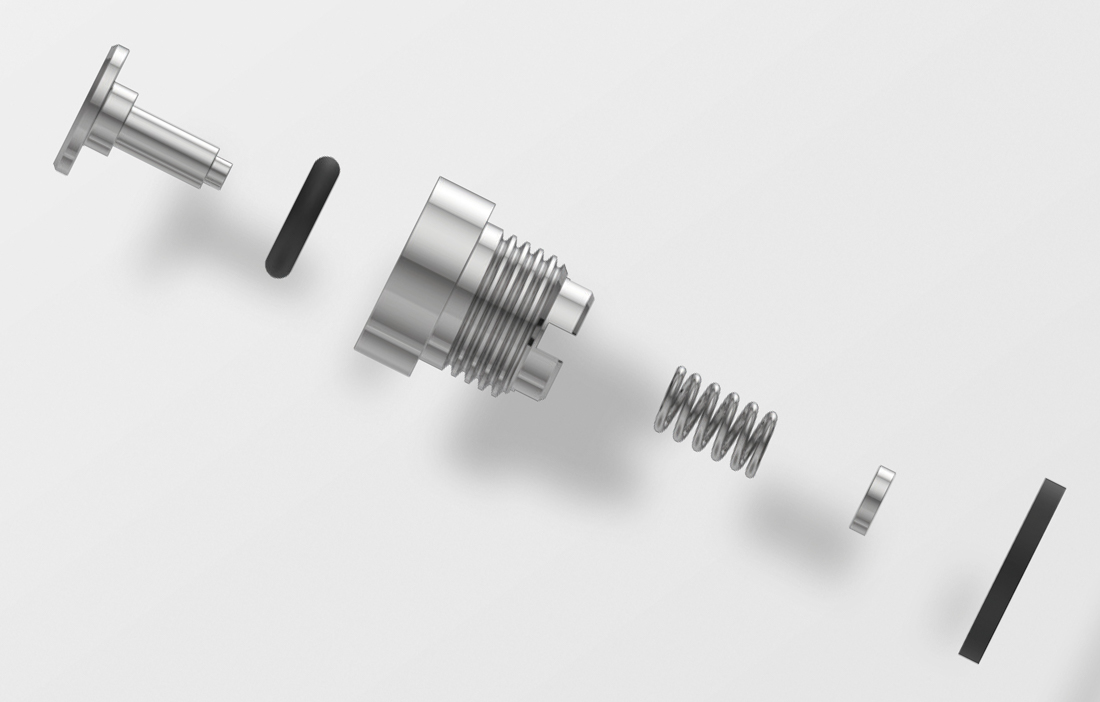
An exploded view of the spring-loaded helium release valve on a Rolex Sea-Dweller
Rolex quickly realized that to provide saturation divers with a watch that can survive the entire saturation diving process from beginning to end, they’d have to develop a release valve to safely allow the exit of helium from inside a watch case, otherwise purpose-built to be tightly sealed for, you know, diving. In practice, the HRV centers around a simple, spring-actuated opening in the side of a watch case. As pressure from expanding helium builds inside the watch case upon decompression of the saturation system, thanks to every diver’s old friend Robert Boyle, a spring allows for the brief actuation of a what is essentially a watch-specific pressure relief valve (PRV), effectively “opening” the watch case just long enough for helium to escape. For me, the easiest way to think about it is to say it works like a burp. As the pressure inside becomes too much, a bit is let out.
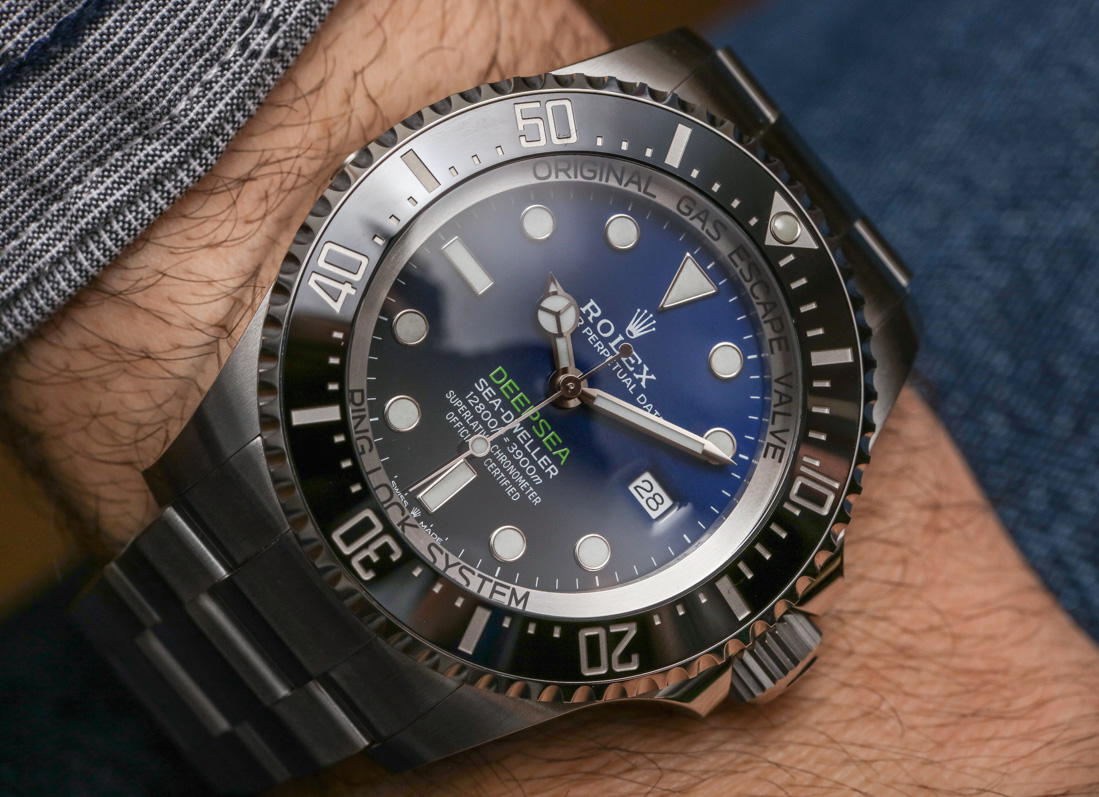 Rolex’s spring-actuated, “automatic” HRV tech, also seen on Doxa’s Conquistador and still the most common style of HRV in the watch industry, hasn’t changed much over the years, from early prototype HRV-equipped Submariner watches (anyone feel free to send me one of these) to the purpose built Sea-Dweller and on to James Cameron’s 51mm DeepSea Challenge, a watch that didn’t need an HRV at all since it was never in a dry helium saturated environment — but I digress. Automatic helium release valves work really well with a couple of caveats. For one, the valve can snag lint or other small particles as it actuates, negatively affecting the watch’s water resistance. Also, automatic HRVs require a certain amount of space to pop out, meaning watches can’t be tightly packed anywhere as gear often is inside the cramped world of saturation systems.
Rolex’s spring-actuated, “automatic” HRV tech, also seen on Doxa’s Conquistador and still the most common style of HRV in the watch industry, hasn’t changed much over the years, from early prototype HRV-equipped Submariner watches (anyone feel free to send me one of these) to the purpose built Sea-Dweller and on to James Cameron’s 51mm DeepSea Challenge, a watch that didn’t need an HRV at all since it was never in a dry helium saturated environment — but I digress. Automatic helium release valves work really well with a couple of caveats. For one, the valve can snag lint or other small particles as it actuates, negatively affecting the watch’s water resistance. Also, automatic HRVs require a certain amount of space to pop out, meaning watches can’t be tightly packed anywhere as gear often is inside the cramped world of saturation systems.
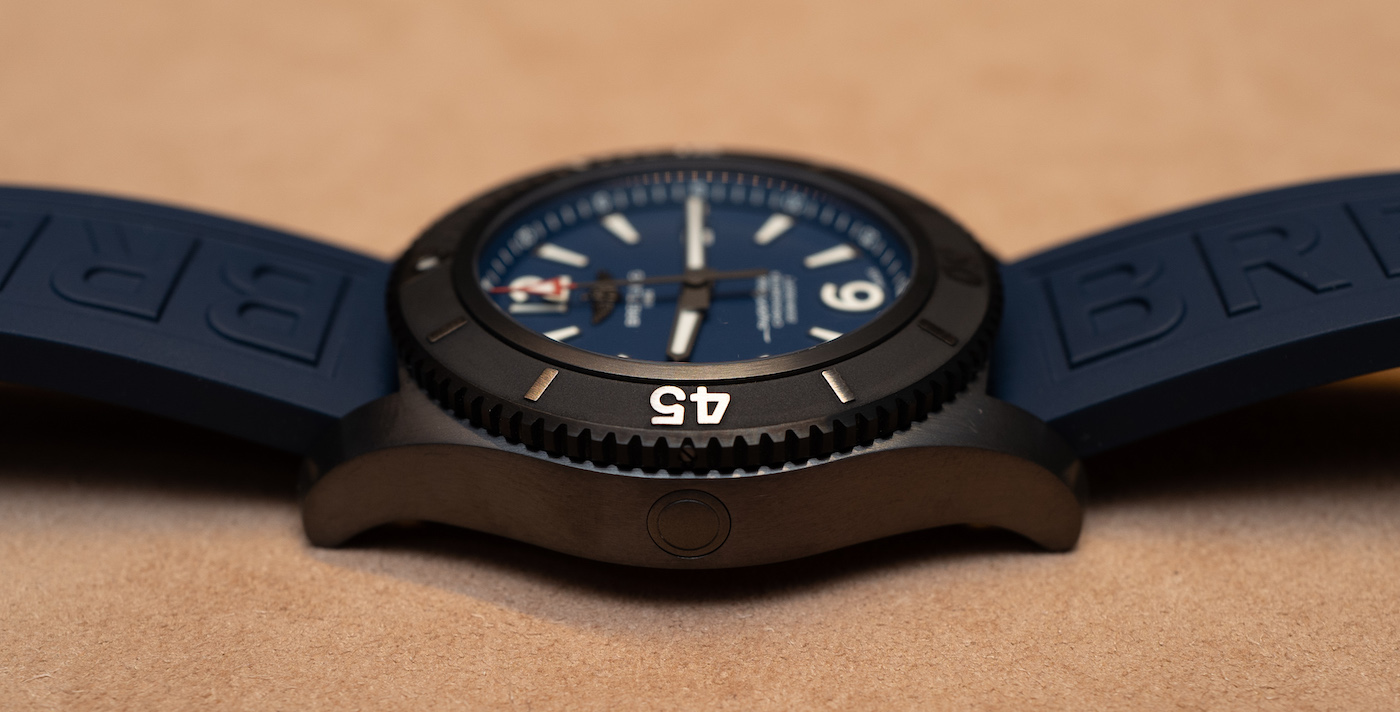 Of course, there is more than one way to skin a cat, and other brands have figured other methods of letting helium escape from inside their watches, most notably in Omega’s literal case with its manual HRV, seen on the Seamaster and Planet Ocean series, which operates by means of another screw-down crown that is designed to be left open during decompression to achieve the same effect. However, a system like Omega’s only works if the diver remembers to open the HRV. Sat divers I’ve spoken to will tell you it’s all too easy to forget to open these little crowns, an expensive mistake to make. Spitting truth, Paul Scurfield, saturation diver and owner of Scurfa Watches, said, “The manual ones are pretty much useless as they (the HRV specific crown) can be pushed back in (by external pressure during “blow down”) and take a seal. They can also fail when unscrewed as the rubber gaskets can be pushed outwards (by internal pressure during decompression) into the crown/cover and also take a seal.” There you have it.
Of course, there is more than one way to skin a cat, and other brands have figured other methods of letting helium escape from inside their watches, most notably in Omega’s literal case with its manual HRV, seen on the Seamaster and Planet Ocean series, which operates by means of another screw-down crown that is designed to be left open during decompression to achieve the same effect. However, a system like Omega’s only works if the diver remembers to open the HRV. Sat divers I’ve spoken to will tell you it’s all too easy to forget to open these little crowns, an expensive mistake to make. Spitting truth, Paul Scurfield, saturation diver and owner of Scurfa Watches, said, “The manual ones are pretty much useless as they (the HRV specific crown) can be pushed back in (by external pressure during “blow down”) and take a seal. They can also fail when unscrewed as the rubber gaskets can be pushed outwards (by internal pressure during decompression) into the crown/cover and also take a seal.” There you have it.
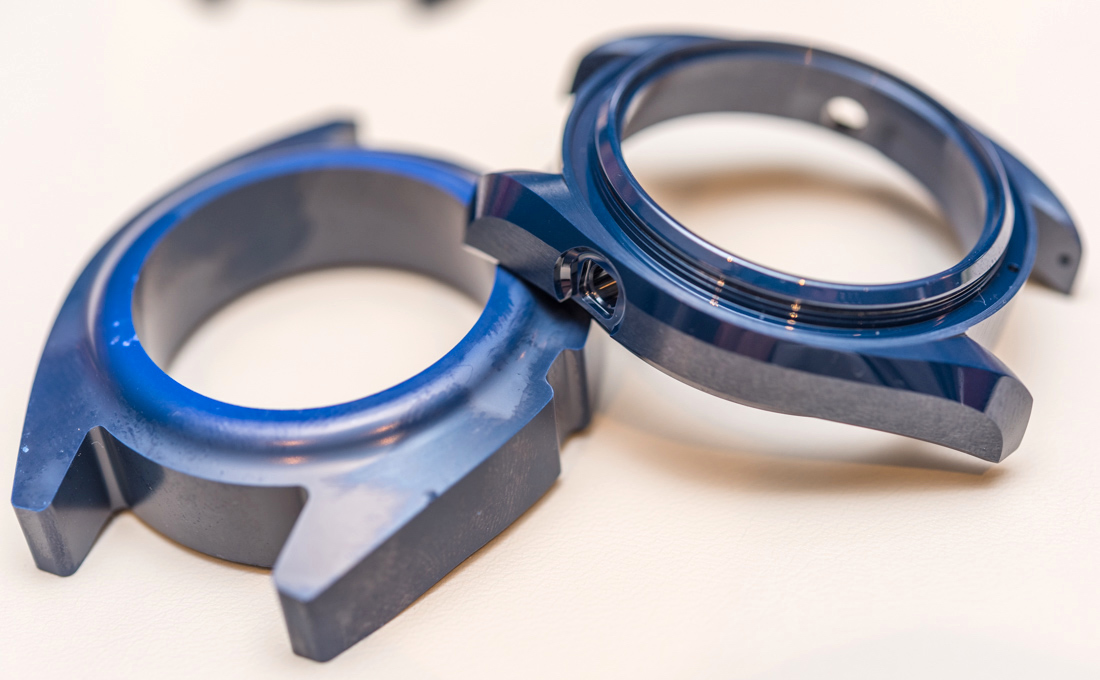
The monobloc ceramic case on an Omega Seamaster Planet Ocean ‘Deep Blue’ is drilled twice: once for the crown, and a second time for the helium release valve at 10:00
In reality, knowing the inevitability of helium making its way into a watch, most saturation divers simply unscrew their crowns as they are initially put under pressure (an hours long process known as “blow down”) to ensure they can later operate their crowns and change the time or date, a practice which would be impossible if the watch weren’t equalized. Considering how often diving support vessels transit across time and date lines, being able to set the watch in sat is crucial. This also means watches designed to not need a helium release valve, thanks to their helium-tight construction, like Seiko’s saturation-ready divers, are only useful if they don’t need to be set, which, as I’ve just noted, is something that happens all the time.
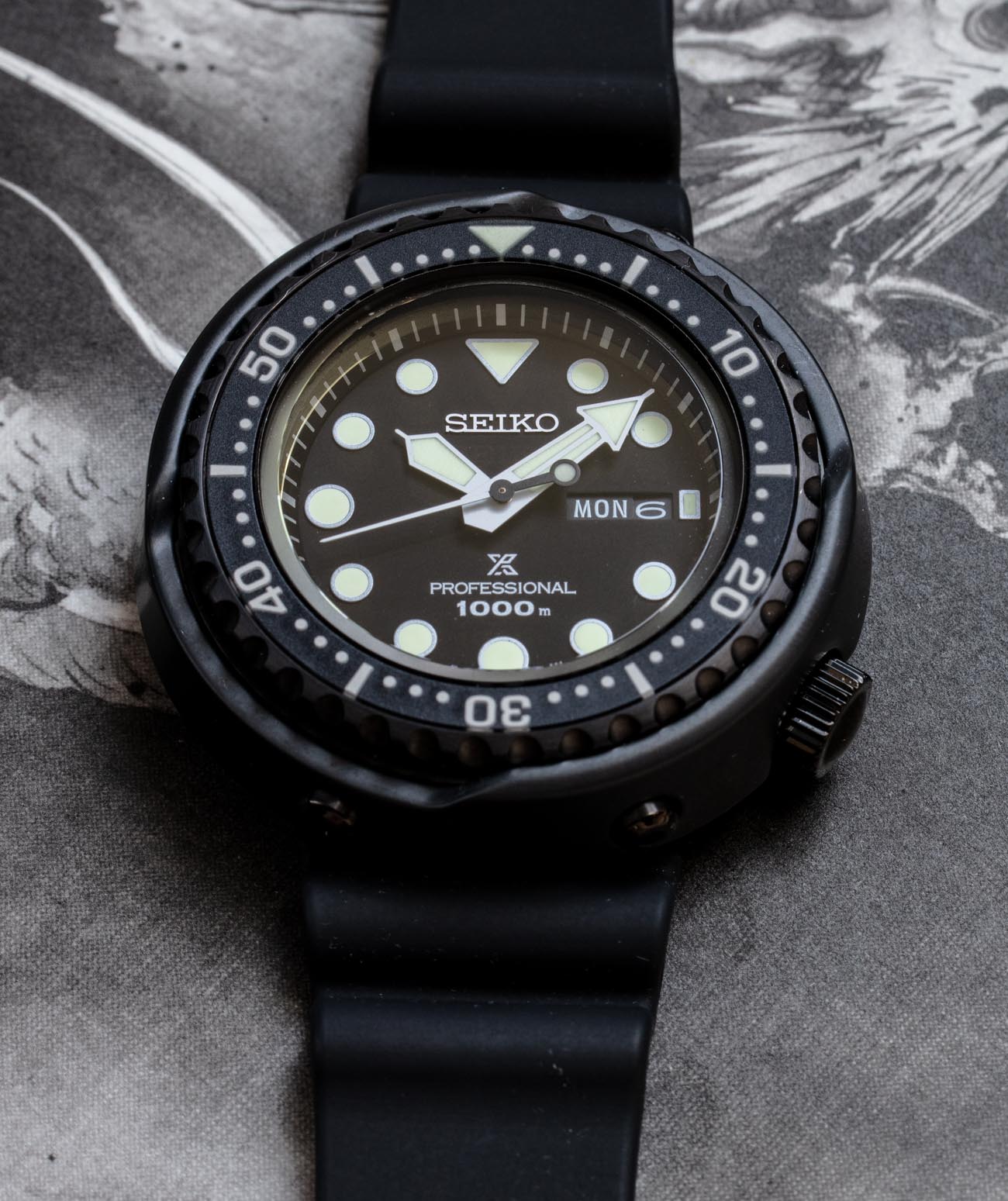 One of my dive school instructors also once reminded me that every watch has a special opening capable of releasing rapidly expanding helium called… the crown, but again a diver would have to remember to open it, and keeping the watch open for extended periods like a days long decompression risks the entry of dust, dirt, and other particles that can damage the movement. But wait, if I open the watch in any way, won’t water get in? Sure, it might if it were wet, but remember, the entire saturation decompression process takes place inside the dry living habitat in a saturation system at the end of a sat run, meaning there is no risk of water sneaking through the HRV.
One of my dive school instructors also once reminded me that every watch has a special opening capable of releasing rapidly expanding helium called… the crown, but again a diver would have to remember to open it, and keeping the watch open for extended periods like a days long decompression risks the entry of dust, dirt, and other particles that can damage the movement. But wait, if I open the watch in any way, won’t water get in? Sure, it might if it were wet, but remember, the entire saturation decompression process takes place inside the dry living habitat in a saturation system at the end of a sat run, meaning there is no risk of water sneaking through the HRV.
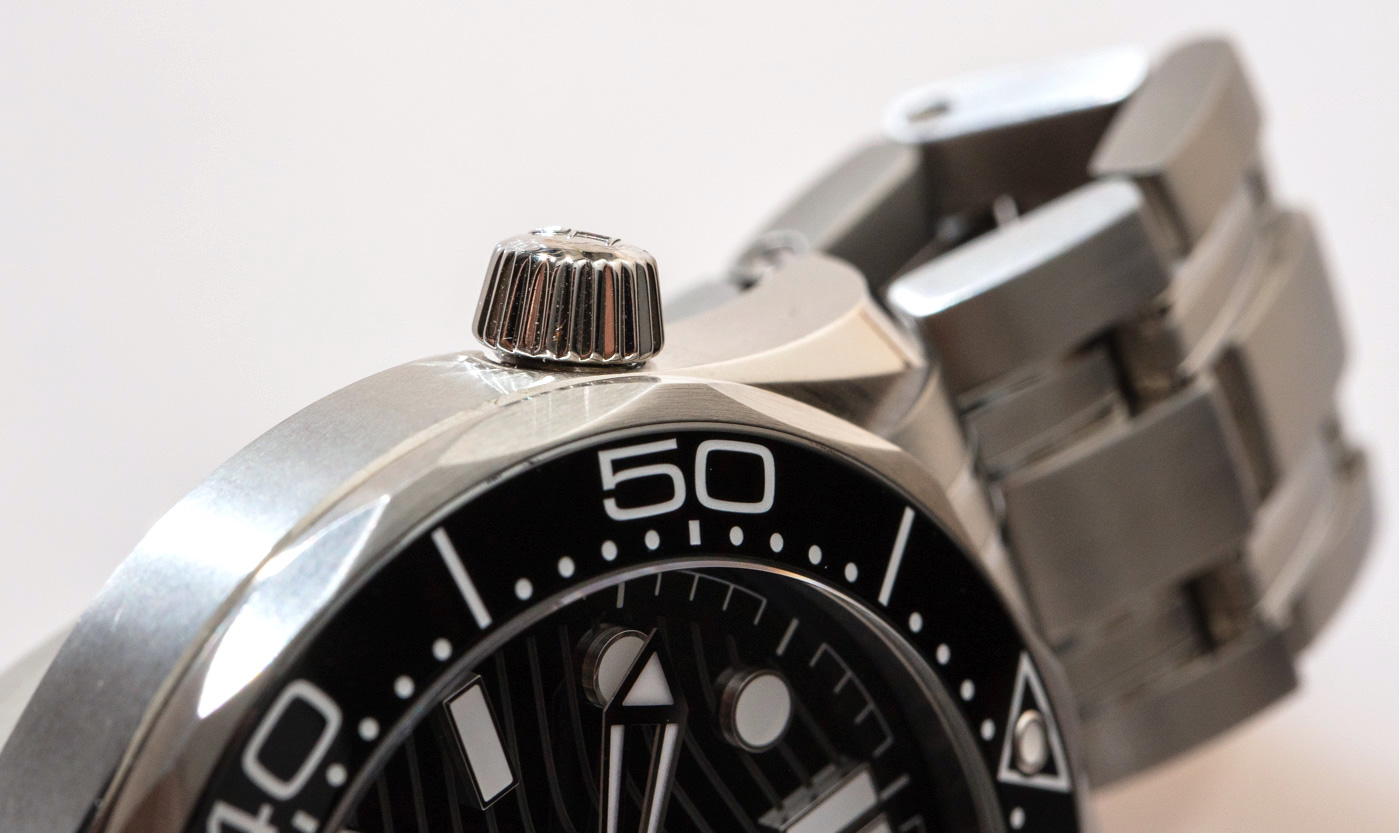 Of course, diving watches not exactly being the essential tools they were in the era of Jacques Cousteau’s Conshelf or Captain George Bond’s SEALAB I and II, the actual utility behind a saturation-specific diving watch is in question even for a sat diver, and is completely and totally unnecessary for literally any other person, and even other modes of diving. Most sat divers who wear a watch don’t even wear them in the water to keep them safe, instead trusting their watches for chronological equilibrium inside the disorienting round-the-clock work environment inside a saturation system. I have heard some sat divers say they dive with their watches, albeit most often under their hot water suit sleeves, just for sentimental and how-much-longer-do-I-have-to-do-this-before-I-get-coffee-and-a-sandwich purposes.
Of course, diving watches not exactly being the essential tools they were in the era of Jacques Cousteau’s Conshelf or Captain George Bond’s SEALAB I and II, the actual utility behind a saturation-specific diving watch is in question even for a sat diver, and is completely and totally unnecessary for literally any other person, and even other modes of diving. Most sat divers who wear a watch don’t even wear them in the water to keep them safe, instead trusting their watches for chronological equilibrium inside the disorienting round-the-clock work environment inside a saturation system. I have heard some sat divers say they dive with their watches, albeit most often under their hot water suit sleeves, just for sentimental and how-much-longer-do-I-have-to-do-this-before-I-get-coffee-and-a-sandwich purposes.
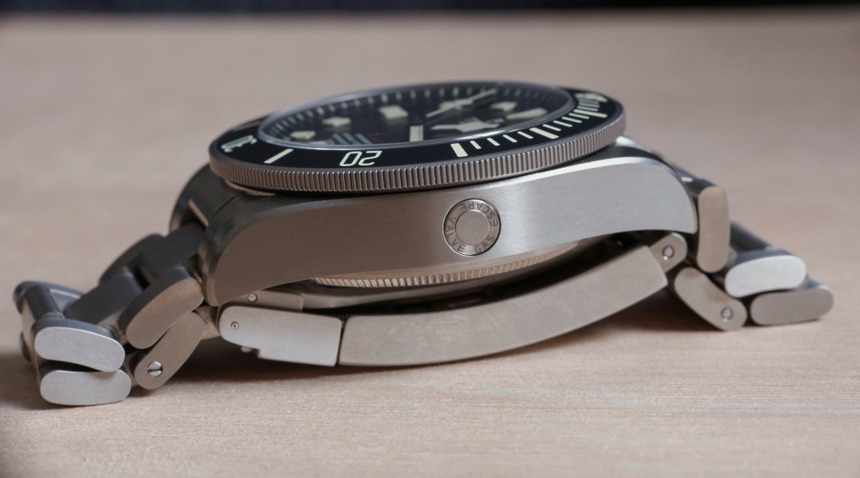
To make it simple, the helium release valve, in either form, is a pressure relief valve built into a watch to allow for the escape of rapidly expanding helium gas that has made its way into a watch case over the course of time spent inside the saturation system in a dry, helium-rich environment. Now, if you’re a saturation diver and you’d really like to wear a watch into sat (or just need something to spend your $1000-1800 saturation daily wages on), you’re going to need to address the issue of the HRV. If you’re anyone else doing literally anything else, and I’m also talking to all of the other types of divers I’ve described, you simply do not and will never need a helium release valve. A watch strapped outside a submersible for marketing purposes doesn’t need a helium release valve. People get this wrong a lot. Case in point: Omega’s recent Ultra Deep was the focus of some misinformed criticism recently from social media users who claimed it couldn’t be a “real” diver’s watch without an HRV, but since the Ultra Deep was designed for in-water use, Omega got it exactly right by equipping the watch as it did, sans valve. A Navy SEAL’s watch doesn’t need a helium release valve. A super-serious, barrel-chested, dip-spitting, tender-hazing commercial diver in the oilfield doesn’t need one either (unless he ends up in sat).
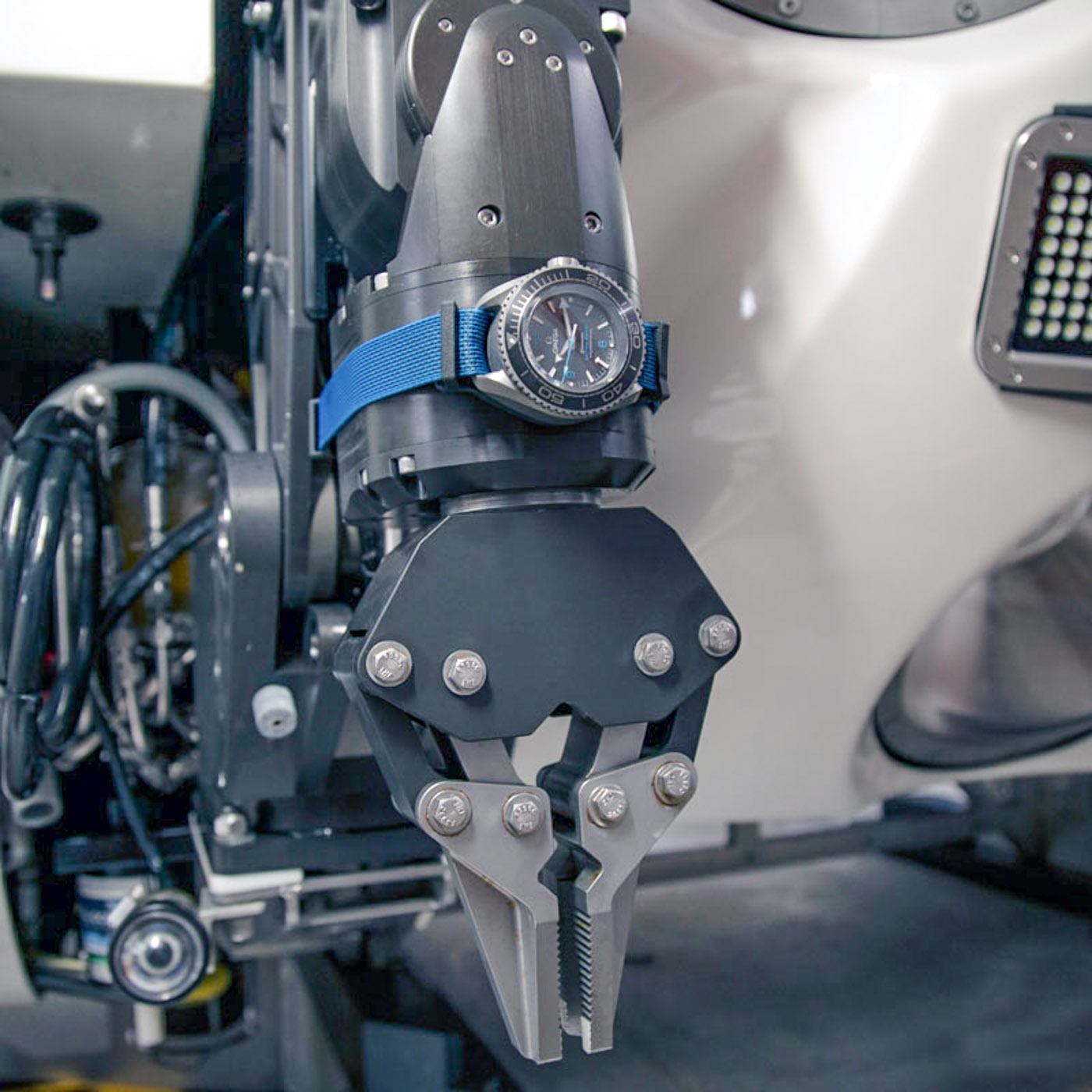 Don’t let the keyboard aquanauts out there convince you that you can’t take your Rolex into the deep end of the Holiday Inn pool without an HRV or move your arms lest you risk increasing the dynamic pressure to over the Submariner’s rated 300 meters (don’t get me started) and ruining your investment. They’re just wrong. As a disclaimer, none of what I have written is meant to say brands are wrong to equip watches with helium release valves. In fact, I think it’s a cool feature that speaks to the development of diving watches and their history as an essential undersea tool. Like race cars capable of 200mph being used for the soccer practice commute, dive watches have features like the HRV that most don’t need simply because it’s impressive and interesting to know the engineering and history that went into the watches we wear, even if they’re more likely telling the time at the local coffee shop than at the bottom of the North Sea.
Don’t let the keyboard aquanauts out there convince you that you can’t take your Rolex into the deep end of the Holiday Inn pool without an HRV or move your arms lest you risk increasing the dynamic pressure to over the Submariner’s rated 300 meters (don’t get me started) and ruining your investment. They’re just wrong. As a disclaimer, none of what I have written is meant to say brands are wrong to equip watches with helium release valves. In fact, I think it’s a cool feature that speaks to the development of diving watches and their history as an essential undersea tool. Like race cars capable of 200mph being used for the soccer practice commute, dive watches have features like the HRV that most don’t need simply because it’s impressive and interesting to know the engineering and history that went into the watches we wear, even if they’re more likely telling the time at the local coffee shop than at the bottom of the North Sea.
